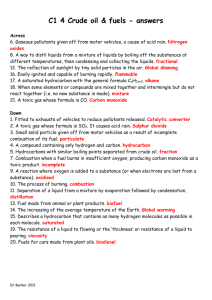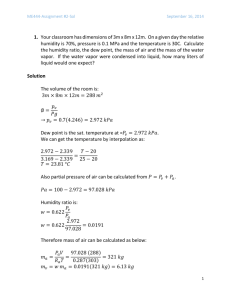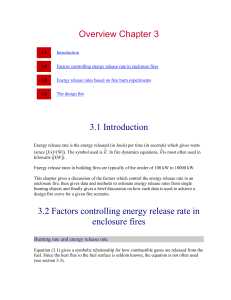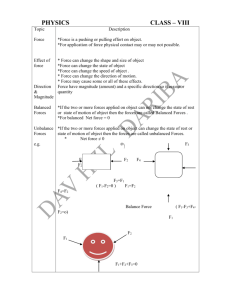E h = cmΔT - Smithycroft Secondary School
advertisement
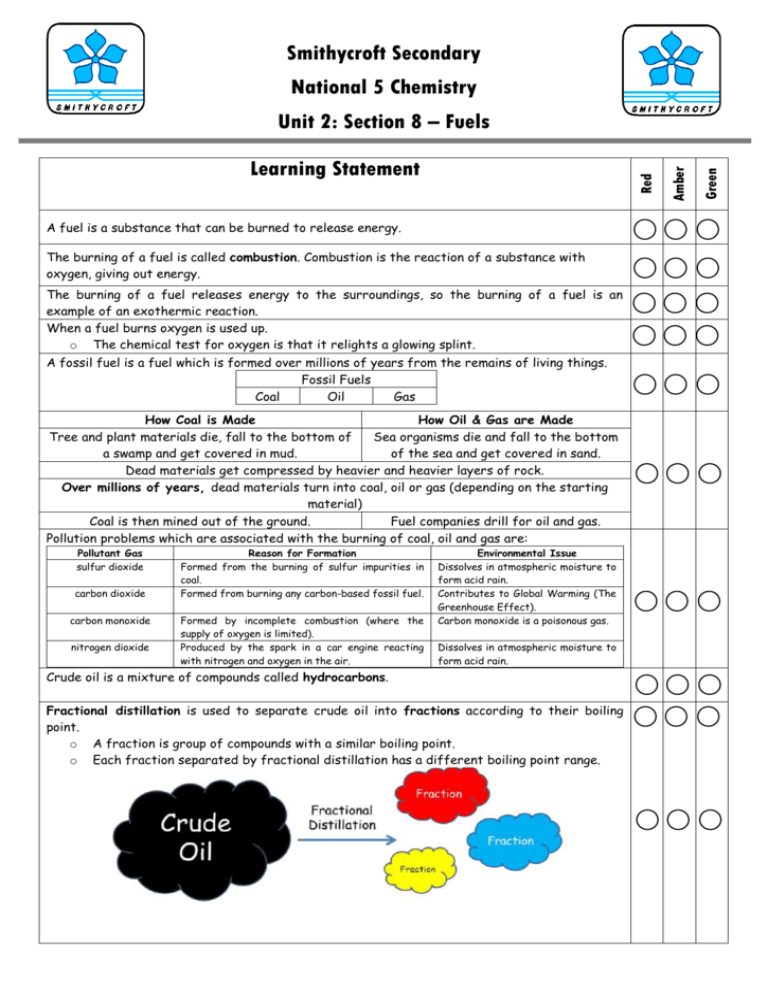
Smithycroft Secondary National 5 Chemistry A fuel is a substance that can be burned to release energy. The burning of a fuel is called combustion. Combustion is the reaction of a substance with oxygen, giving out energy. The burning of a fuel releases energy to the surroundings, so the burning of a fuel is an example of an exothermic reaction. When a fuel burns oxygen is used up. o The chemical test for oxygen is that it relights a glowing splint. A fossil fuel is a fuel which is formed over millions of years from the remains of living things. Fossil Fuels Coal Oil Gas How Coal is Made How Oil & Gas are Made Tree and plant materials die, fall to the bottom of Sea organisms die and fall to the bottom a swamp and get covered in mud. of the sea and get covered in sand. Dead materials get compressed by heavier and heavier layers of rock. Over millions of years, dead materials turn into coal, oil or gas (depending on the starting material) Coal is then mined out of the ground. Fuel companies drill for oil and gas. Pollution problems which are associated with the burning of coal, oil and gas are: Pollutant Gas sulfur dioxide carbon dioxide carbon monoxide nitrogen dioxide Reason for Formation Formed from the burning of sulfur impurities in coal. Formed from burning any carbon-based fossil fuel. Formed by incomplete combustion (where the supply of oxygen is limited). Produced by the spark in a car engine reacting with nitrogen and oxygen in the air. Environmental Issue Dissolves in atmospheric moisture to form acid rain. Contributes to Global Warming (The Greenhouse Effect). Carbon monoxide is a poisonous gas. Dissolves in atmospheric moisture to form acid rain. Crude oil is a mixture of compounds called hydrocarbons. Fractional distillation is used to separate crude oil into fractions according to their boiling point. o A fraction is group of compounds with a similar boiling point. o Each fraction separated by fractional distillation has a different boiling point range. Green Red Learning Statement Amber Unit 2: Section 8 – Fuels Fractions obtained from the fractional distillation of crude oil have a variety of uses. Petroleum Gas bottled gases, Calor gas Naphtha petrol, making plastics Kerosene aircraft fuel, paraffin Light Gas Oil diesel Heavy Gas Oil ship fuel, lubrication oil Residue bitumen, tar Viscosity is the measure of the thickness of a liquid. o The more viscous a substance is, the thicker it is and the less easily it flows. Flammability means how easily a substance catches fire. o The bigger a molecule is, the less flammable it is. Complete combustion of a fuel is when it is burned in a plentiful supply of oxygen. Incomplete combustion of a fuel is when it is burned in a limited supply of oxygen. o In carbon based fuels this can lead to the formation of poisonous carbon monoxide. A hydrocarbon is a compound which contains only carbon and hydrogen. Complete combustion of a hydrocarbon results in the formation of carbon dioxide and water. o Hydrogen burns in oxygen to form hydrogen oxide (water) o Carbon burns in oxygen to form carbon dioxide. The following apparatus could be used to examine the products of combustion of a hydrocarbon. Air pollution from the burning of hydrocarbons can be reduced by adding catalytic converters to car exhausts which contain platinum catalysts. Catalytic converters convert harmful gases into harmless gases. The energy produced by a fuel can be calculated using the following formula: Eh = cmΔT where: o o o o Eh = the energy given out in the reaction, measured in kilojoules (kJ) c = the specific heat capacity of water, 4.18 kJ kg-1 oC-1 (in data booklet) m = mass of water being heated, which must be in kg (e.g. 75 cm3 water = 75/1000 kg) ΔT = the change in temperature of the water (oC)

